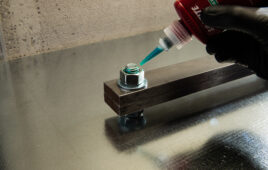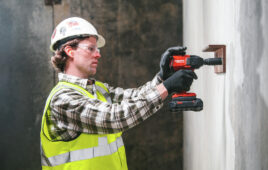
The illustration shows two samples bonded together and loaded to test the lap-shear strength.
Lap shear strength is the ability of an adhesive to resist forces in the plane of the bonded surfaces. Bonded structural joints are typically designed so that the adhesive is only subjected to in-plane forces, resulting in shear stress in the adhesive.
Compressive forces are transferred by surface contact alone and do not require any bond strength. Structural adhesives are typically less able to resist tension and, therefore, this type of loading condition should be avoided. Mechanical fasteners also work best when loaded in this way.
The greater the surface area of the bond, the greater the force it will withstand. The lap shear strength is therefore given as a force per unit area, it has the same units of measurement as pressure.
Epoxy resin is an ideal structural adhesive for many applications, including metals and polymers as it achieves high strength even when filling gaps between components. The lap-shear strength of epoxy adhesive can be as high as 25 MPa when bonding composite parts with an epoxy matrix although for aluminum parts, this is typically just 6 MPa.
Cyanoacrylate (super glue) can sometimes provide a higher lap shear strength for metal components that have a tightly conforming interface, resulting in a very thin bond line. For aluminum parts lap-shear strength can be as high as 17 MPa
ISO 4587 provides a standard method to determine the lap-shear strength of a bond between two rigid test specimens. Each specimen should be 100 x 25 x 1.6 mm. These are bonded with an overlap of 12.5 mm and clamped over a 37.5 mm length at each end. The force required to pull the specimens apart is then recorded. The results should be based on at least 5 observations. A
STM D1002 also provides standard methods for determining the lap shear strength of metal-to-metal adhesive bonds. ASTM D3163 is the equivalent standard for plastics and ASTM D5868 is for fiber-reinforced plastics.





Tell Us What You Think!